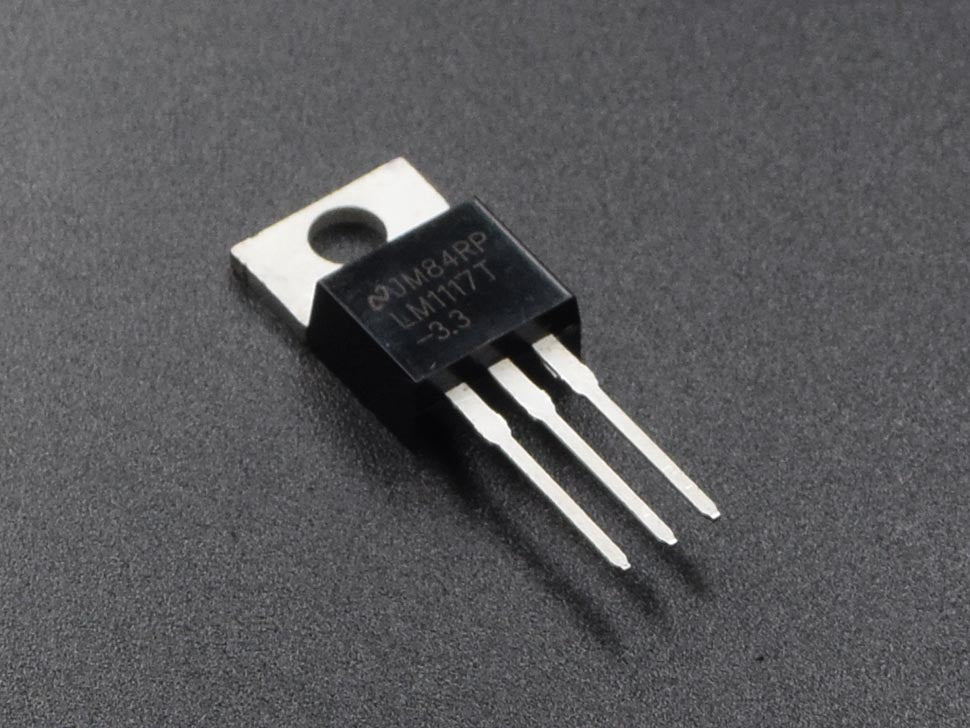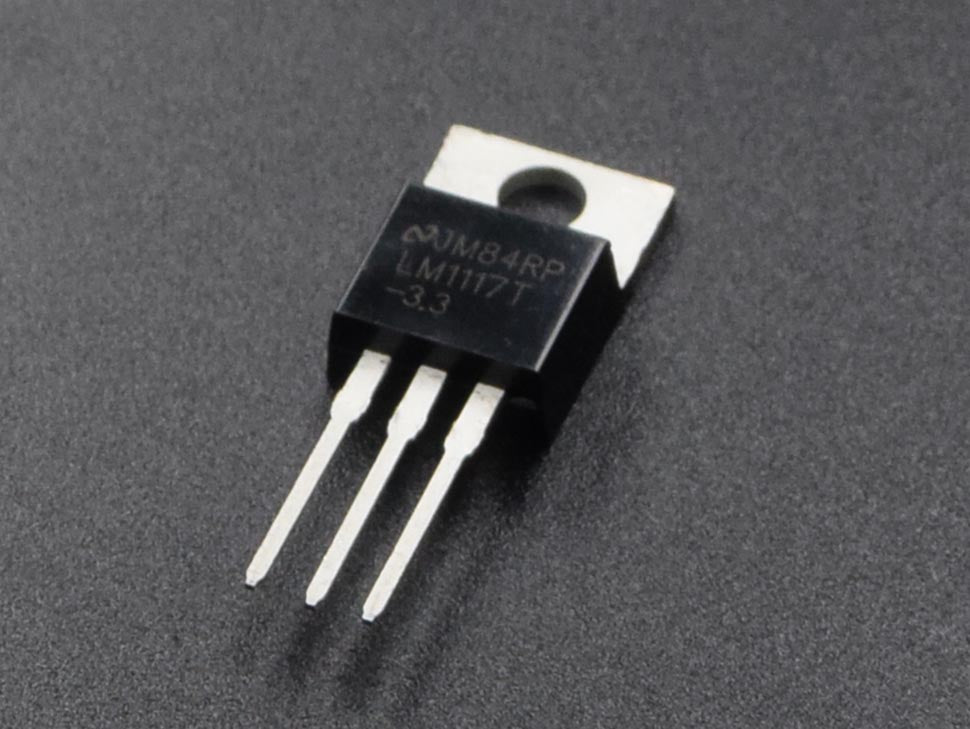Linear Voltage Regulator 3.3V 800mA LD1117-3.3 TO-220
Linear Voltage Regulator 3.3V 800mA LD1117-3.3 TO-220 - The LD1117 3.3V linear voltage regulator, version TO-220, could give you a constant output voltage of 3.3V from 4V to 15V power supply input, with a 1V linear dropout. That means that you need at least 4.3V input to get 3.3V output.
It converts the 5V power supply to 3.3V for supplying other components. It has a quiescent current draw of 5mA and can provide up to 800mA, using a proper heatsink.
More and more heat occurs as voltage increases.
Without a proper heatsink, this module could burn up to 2W. There is a formula for determining the need for a heatsink related to your power supply input by determining your setup wattage. The formula goes like W = input voltage - 3.3V * average current output(A). Any wattage that goes above 2W would require a heatsink on your setup.
This regulator has an internal current limiting and thermal shutdown protection that makes it the right choice for electronics projects because of its durability.
Frequently asked questions about Linear Voltage Regulator 3.3V 800mA LD1117-3.3 TO-220
Q1: What kinds of voltage regulators are on the market?
Linear voltage regulators are the most readily available and frequently the simplest to use the form of voltage regulators. Compact and frequently employed in low-voltage, low-power devices are linear regulators. Although switching voltage regulators are more expensive and more difficult to use than linear voltage regulators, they are more efficient. Although affordable and simple to use, zener diodes are less effective than linear regulators.
- Linear Regulators
Using a common 3-pin linear voltage regulator, such as the LM7805, which produces a 5-volt, 1-amp output with an input voltage of up to 36 volts, is one of the simplest ways to provide a stable voltage for electronics (depending on the model). In essence, linear regulators transform into voltage divider circuits by altering the effective resistor (ESR) of the regulator in response to a feedback voltage. This enables the regulator to output a constant voltage up to its current capacity regardless of the current applied loads to it.
The substantial minimum voltage drop of linear voltage regulators, which is 2.0 volts on the common LM7805 linear voltage regulator, is one of their major drawbacks. Therefore, at least a 7-volt input is needed to provide a consistent 5-volt output. As a result of this voltage drop, the linear regulator must expend at least 2 watts of electricity to supply a 1-amp load (2-volt voltage drop times 1 amp).
- Switching Regulators
When the induced voltage between the input and output is small and not much power is needed, linear regulators are excellent low-cost, low-power solutions. Switching regulators are a good alternative to linear regulators since they are more effective, which is one of their main drawbacks. The ideal choice is a switching regulator when great efficiency is required or a wide range of input voltage is anticipated. In contrast to linear voltage regulators, which frequently have power efficiencies below 50%, switching voltage regulators have power efficiencies of 85% or more.
Compared to linear regulators, switching regulators typically require more components. Comparatively to linear regulators, the values of the components have a greater impact on the overall performance of switching regulators. Due to the electronic noise that switching regulators produce, it can be difficult to use them effectively without sacrificing the performance of the circuit.
- Zener Diodes
Using a Zener diode to control voltage is one of the easiest methods. While Zener diodes offer effective voltage regulation in a single component, linear regulators are typically simple in construction. Zenerdiodes can be used as a straightforward voltage regulator by having the output voltage drawn across the leads of the device because they shunt all excess voltage above their breakdown voltage threshold to the ground. However, because of their limited capacity to manage power, zeners can only be used in low-power applications.
When employing Zener diodes in this way, it's best to deliberately choose an appropriate-sized resistor to restrict the amount of power that can pass through the Zener.
TECHNICAL DETAILS
-
Datasheet
- Dimensions: 29mm x 10mm x 4mm / 1.1" x 0.4" x 0.2"
- Pin Length: 13mm / 0.5"
Linear Voltage Regulator 3.3V 800mA LD1117-3.3 TO-220
Linear Voltage Regulator 3.3V 800mA LD1117-3.3 TO-220
180 in stock
Product Code
SKU:AK076
Couldn't load pickup availability




